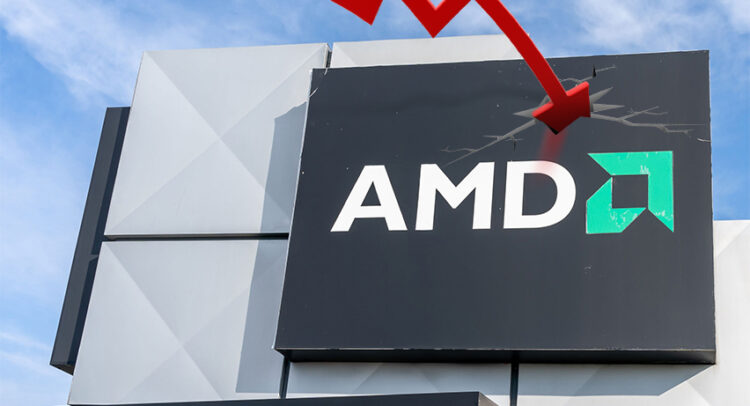Based on the underperformance of publicly traded graphics processor specialists, semiconductor giant Advanced Micro Devices (AMD) seems to represent a risky directional wager. However, shrewd investors can still generate income from options trading even if AMD stock goes sideways. Therefore, utilizing options as a passive mechanism may be better than active speculation. For those reasons, I have a “Hold” sentiment on the technology company.
Invest with Confidence:
- Follow TipRanks' Top Wall Street Analysts to uncover their success rate and average return.
- Join thousands of data-driven investors – Build your Smart Portfolio for personalized insights.
Horizontal Consolidation Expected for AMD Stock
To hold a neutral position on one of the biggest players in the AI industry may sound odd, but I will explain my rationale.
In an earlier paradigm, investors were ecstatic about AMD stock, and especially about its main rival, Nvidia (NVDA). Artificial intelligence was at the heart of it, with enterprises pouring billions of dollars into the graphics processors that undergird advanced innovations such as machine learning. Indeed, Grand View Research pointed out that the AI industry may expand at a compound annual growth rate (CAGR) of 36% through 2030.
Still, all good things must come to an end (or at the very least decelerate), and that’s exactly what happened with AMD stock. In anticipation of the company’s latest financial results for the second quarter, analysts expected ambitious yet feasible goals: a 17% increase in earnings per share to 68 cents compared to the same quarter last year, and a 6.7% year-over-year rise in revenue to $5.72 billion.
Sure enough, Advanced Micro delivered the goods. In Q2, the company posted EPS of 69 cents and rang up $5.84 billion in sales. After a brief pop, AMD stock sank. To be fair, the implosion of the yen carry trade contributed to a sharp correction in global equities during that time. However, the point of the matter is that AMD doesn’t appear to be able to post new highs.
Investors can turn to the disappointing market reaction to Nvidia’s earnings as confirmation. Although the semiconductor giant posted solid Q2 results, NVDA stock sank post-disclosure. After getting high on the hog of consistently robust earnings beats, the market sought another supremely impressive turnout, which did not happen.
After the initial wave of AI development, the future direction of AI technology is uncertain. This uncertainty has impacted the position of companies like AMD in the market. While AMD’s relevance in the industry is evident, there are no more unexpected advantages to rely on. This situation is not expected to cause the company to fail, but it does present a challenge.
AMD seems destined to trade sideways for a while, hence my neutral position. However, that doesn’t mean you can’t win.
Generating Profits Through Sideways Movement
While a directional wager is the simplest way to generate profits in the equities space, it’s not the only methodology. Like in American football, a team can score points in multiple ways. When a publicly traded security seems poised to move horizontally, traders can generate income from the framework.
To accomplish this directive, you sell a put at a strike price lower than the current market price. By doing this, you are underwriting the risk that the underlying security will not fall to the target strike price. As a reward for taking on this risk, you receive income or the premium the put buyer pays for the option contract.
However, you also want to limit your risk if the security falls much further than anticipated. Therefore, you can buy a put with the same expiration date at a lower strike price. The difference between the strike prices minus the premium received (multiplied by 100 shares) represents your maximum loss.
Let’s take a look at a real-life example. Assume that you want to generate quick income and you anticipate that AMD stock will fall no more than $140. That seems reasonable given that $140 appears to be a technical support line.
You may choose to sell the $140 put at a bid of $1.49. At the same time, you could elect to buy the $135 put at an ask of 74 cents. Here, the maximum profit is the income received by the sale of the put versus the cost of buying a put, multiplied by 100 shares per contract or $75. Further, the maximum loss in this trade is $425.
Importantly, the breakeven price for this trade is $139.25. If AMD stock falls below this point, the opposite side of the trade (the put buyer) would win. However, you will be the winner if Advanced Micro simply moves sideways (or, better yet, higher) over the next two weeks.
Wall Street’s Take on Advanced Micro Devices
Turning to Wall Street, AMD stock has a Strong Buy consensus rating based on 28 Buys, six Holds, and zero Sell ratings. The average AMD price target is $190.25, implying 28.06% upside potential.

The Takeaway
As stated earlier, I’m neutral on AMD stock. It’s difficult not to be. While Advanced Micro Devices commands significant relevance in the AI ecosystem, the market no longer appears impressed with what it and its peers have produced recently regarding financial results. However, that doesn’t mean you can’t extract profits from it. On the contrary, you can earn income on shares without falling by placing a bull put spread wager. That seems very reasonable, given the present framework.









